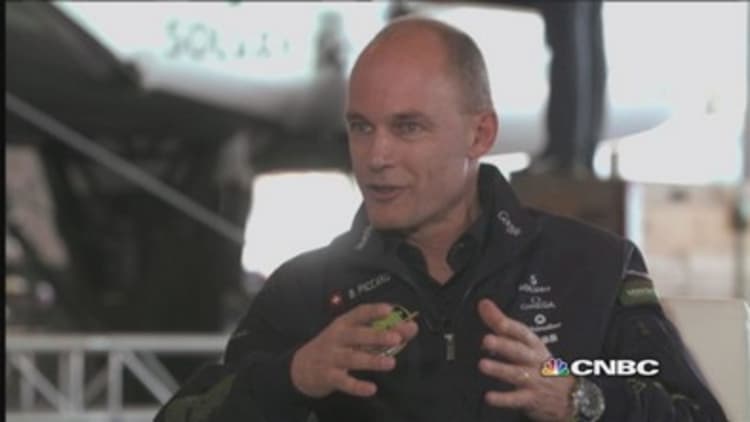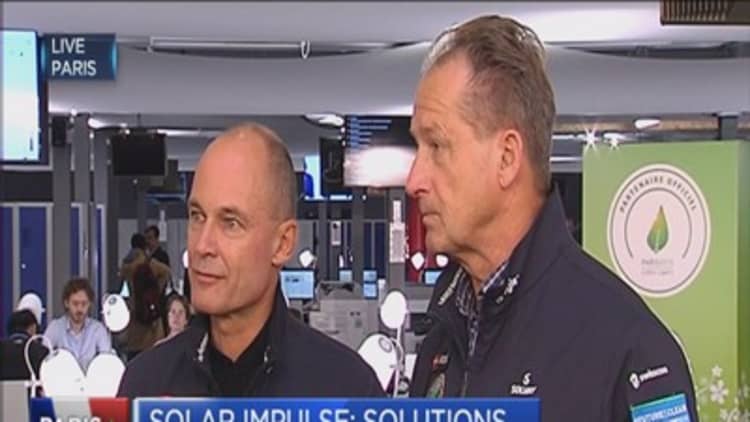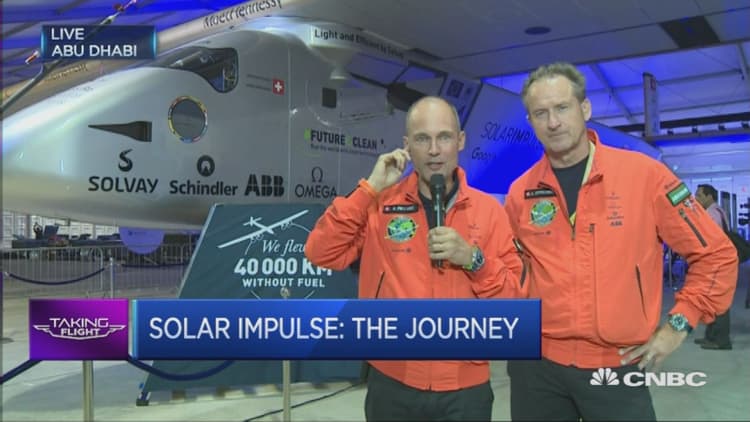In March 2015, solar-powered aircraft Solar Impulse 2 took on the mammoth task of a round-the-world flight without a drop of fuel.
More than a year later, the plane successfully landed back Tuesday where it started and has managed to clock up a number of world records.
Dubbed as the "definition of adventure" by its pilots and having brought solar-powered technology to the forefront of people's minds, CNBC takes a look back at some of Solar Impulse 2's most noteworthy moments during its round-the-world trip.
Before taking flight
The concept of Solar Impulse actually dates back to 1999, when pilot Bertrand Piccard flew around the globe in a balloon. On his trip with Brian Jones, Piccard became extremely conscious of the amount of fuel needed during the voyage; triggering a desire to ensure his next round-the-world flight was fuel and emissions-free.
Following years of research, Piccard officially founded the Solar Impulse project with fellow pilot, André Borschberg in 2004 and began working on the aircraft's first prototype. In December 2009, the first prototype took a successful short "flea hop" test – for 350 meters, one meter off the ground – and then went on to do its maiden flight in April 2010.
In 2014, the project's pilots and co-founders unveiled Solar Impulse 2 and took it on its first flight.
Taking to the skies
On March 9, 2015, Solar Impulse 2 (Si2) set about to create a world record: to fly around the world powered only by the sun, during the course of five months. Taking flight from the Abu Dhabi, Solar Impulse's CEO André Borschberg flew the plane for 13 hours to Muscat, Oman.

While the journey itself was seen as a first for many, for the pilots it was about promoting clean technologies and demonstrating what solar energy can do for current and future generations.
"In our world today, if we want a better quality of life, to create jobs, to make profit for the industry, to sustain growth for our world, we need new clean technologies, because this is what the world needs," Solar Impulse chairman, Bertrand Piccard told CNBC before the journey began.
The carbon-fiber aircraft itself weighs 2,300 kg, and is equipped with more than 17,240 solar cells stretched out on its wings, which helps power the propellers and electric engines.
July 2015: Breaking records
After travelling to countries including India, China and Japan, Si2 took on its eighth and most challenging leg yet during the early hours (local time) of June 29, 2015: a five-day non-stop flight from Nagoya, in Japan to Kalaeloa, Hawaii.
Piloted by Borschberg, Si2 travelled for more than 8,900 km, achieving the world record for the longest non-stop solo flight.
Grounded: July 2015 – April 2016
Less than two weeks after landing in Hawaii, the pilots announced that Si2 had to be grounded for several months, after the record-breaking flight caused the plane to suffer from "irreversible damage to overheated batteries."
Solar Impulse takes its tech to COP21

Even though Si2 was grounded in Hawaii, this didn't stop the pilots from promoting the power of clean technologies, with Piccard and Borschberg taking to climate summit COP21, to show their support for a greener world.
Everything society currently uses for energy is a "100 years old" Piccard told CNBC at COP21, saying that if the world wants to solve climate change, "it will be done only by having these new technologies which are profitable, create jobs, make new industrial markets and at the same time, reduce CO2 emissions."
April 2016: Recharged and ready to fly
After almost 10 months of being grounded, Si2 returned to the skies on April 21, 2016 from Hawaii and headed towards California's Silicon Valley, with Piccard at the helm.
July 2016: Mission Complete

In mid July 2016, Si2 took to the skies for its 17th, and final leg of its round-the-world trip; starting in Cairo and touching down back where it started in Abu Dhabi.
After the 16-plus months since it first took off, Si2 finished its tour on July 26 in the UAE, having clocked up over 43,000 km and 23 days of flying during the round-the-world tour.
Shortly after Piccard touched down in the UAE, he told CNBC that having both elating moments and setbacks made the solar-powered flight the "definition of adventure."





